1970 Plymouth Hemi GTX Road Test
King of the Second Bridge.
Story and photos by Joe Oldham
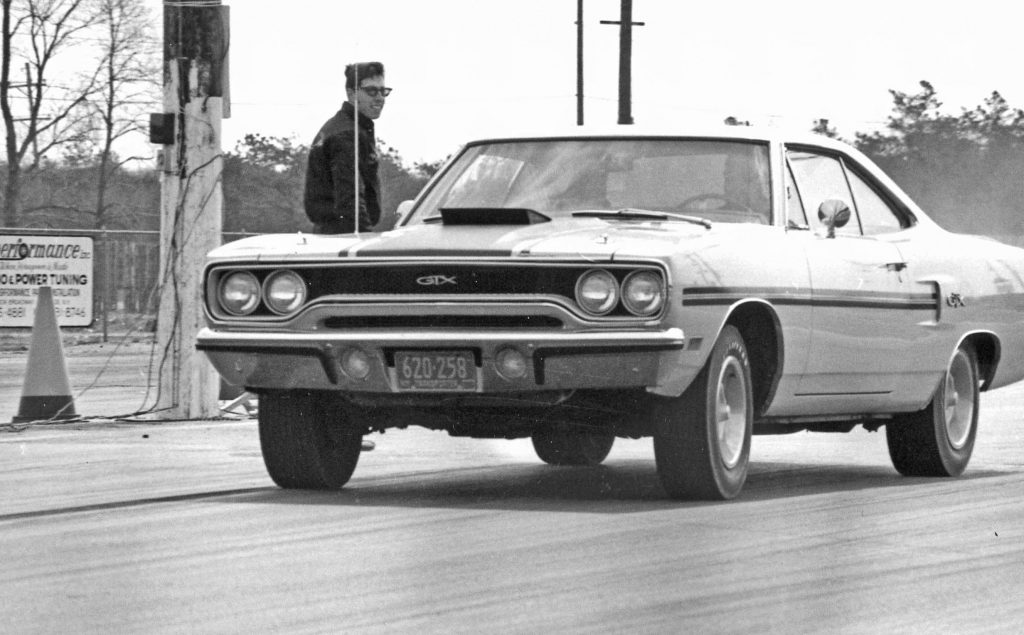
A day at the track sure beats a day at the office (even with cute secretaries and coffee breaks)—especially when you’re molesting a Hemicar.
Suppose your boss walked up to you and said he wanted you to drive around for a couple of weeks in a brand new Plymouth GTX. And yeah, it had a Hemi and 4-speed.
I know! Right?
That’s exactly what happened to me one day in 1970. At the time, I worked as a writer for Hi-Performance Cars magazine and my boss, Marty Schorr, said almost those exact words to me.
“Joe, I like your cover line idea of ‘GTO vs. GTX: Ultimate Shootout.’ Make it happen. Get the cars in here, track test them, drive them as you would your own car, and write up the article for the next issue.”
OK mister boss man!
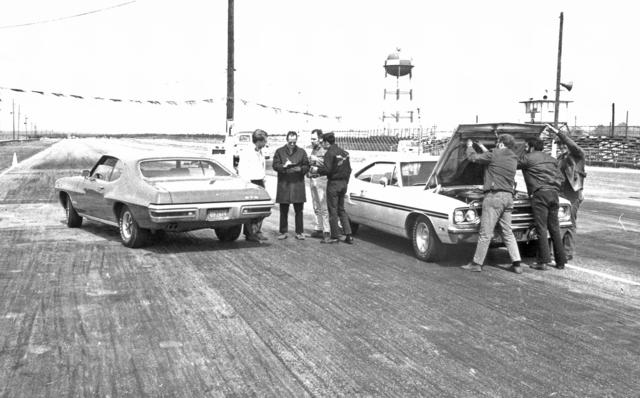
As a shootout between the GTX and the GTO, it was no contest. The 370-pony 400-cube Ram Air IV Poncho might as well have stayed at the car wash.
Lots of phone calls later, there was a ’70 GTO hardtop and a ’70 Plymouth GTX hardtop sitting in my driveway. I had secured the track and lined up a bunch of guys to help me get the cars out to Suffolk County Raceway in Westhampton, NY for the test.
The maroon GTO was a 400 cube, Ram Air IV 4-speed car with 4-speed and 3.90 gears. The Ram Air IV was rated 370 hp at 5600 rpm and 445 lb.-ft. of torque at 3900 rpm. The GTX packed the aforementioned 426 Street Hemi, 4-speed trans and 4.10 rear axle ratio. The Hemi was rated 425 hp at 5000 rpm and 490 lb.-ft. of torque at 4000 rpm. It was an obvious mismatch on paper and this proved true at Westhampton.
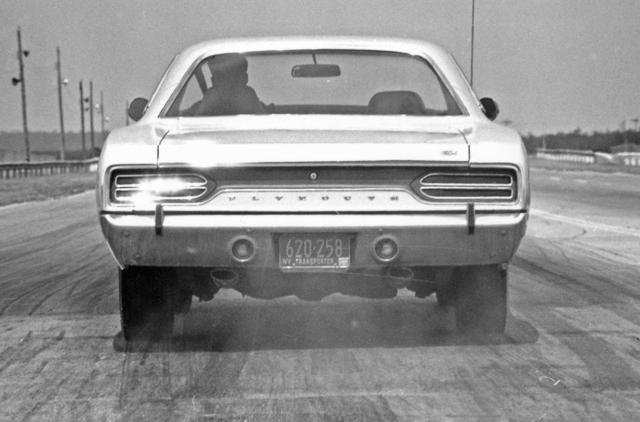
Flogging the “X” at Suffolk Co. Raceway in Westhampton, NY produced a best time of 13.47 ET at 105.88 MPH—with slicks.
I had originally requested a newly available LS5 455HO powered GTO, but the Pontiac guys sent in the 400 instead, claiming the Ram Air IV was the “fastest thing we have for 1970.” Hey, tough shit. That’s your problem, guy. Then get wiped out in the comparison test.
And that’s exactly what happened. The Hemi GTX ran the best time of the day, a 13.47 ET at 105.88 MPH (with slicks) and took every single head-to-head matchup all day long.
So the comparison was over and we had our cover line for the next issue. The Pontiac was going to hang around for a while but the GTX had to go back to Ma Mopar. So I spent the next week getting to know the car a little better and enjoying it as if it was my own. Hey, it was my job.
The GTX was really a nice car, more luxurious than any Road Runner ever dreamed of being. It had power steering, brakes and windows, buckets and console, AM-FM stereo, full gauge package with tach, and various other decor items. The car also packed the 9 ¾-in. Dana 60 differential, standard heavy duty Hemi suspension package, 15×7” Rally wheels mounting F60-15 Goodyear Polyglas GT fiberglass belted tires. Sticker price of the car was $5310–serious money in 1970. At the track, the car weighed 4070 pounds.
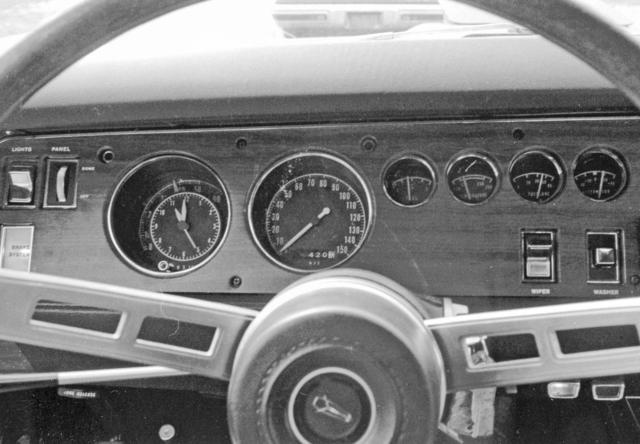
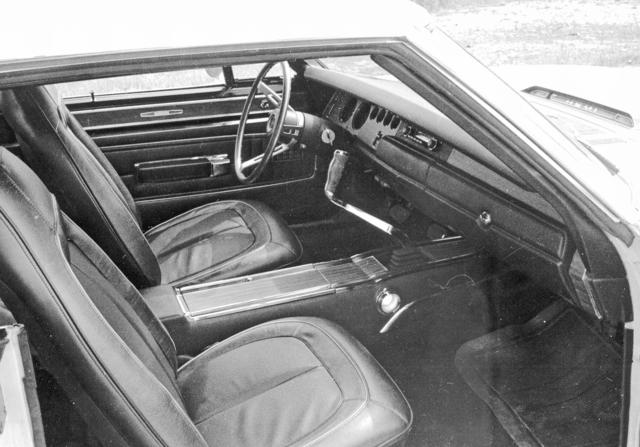
Miles above a Road Runner in terms of luxury and appointments, the GTX came to the track with only 420 miles showing on the odometer. Nothing like ripping gears with that big Hurst stick.
More important, it had the Hemi under the hood. I won’t bore you with all the tech details of that engine as you already know all about it. Suffice to say, carburetion was via twin Carter AFB 4-barrels on an inline manifold and cold air was inducted through the flip-top Air Grabber hood scoop that raised and lowered itself via engine vacuum and a dash-mounted switch.
Some guys forget that there was an important internal change to the 426 Street Hemi for 1970. The camshaft was changed to a hydraulic unit, so no more hassling adjusting valves. The timing specs of 284/284 degrees duration for intake/exhaust, 68 degrees overlap and 0.490-in. lift were identical to the previous year’s solid lifter cam.
I mentioned our 13.47/105.88 mph run at the track. And I said that run was with Goodyear slicks. Full disclosure: With the GTX’s street tires, the best run we could mount was a 13.85 at 104 mph. We shifted at 6300 RPM because that’s how the car made its best times, though the Hemi would run all the way up to seven grand. But we ran into a traction wall at 13.85 seconds ET. Nothing we tried could overcome the problem, and that’s when we switched to the slicks.
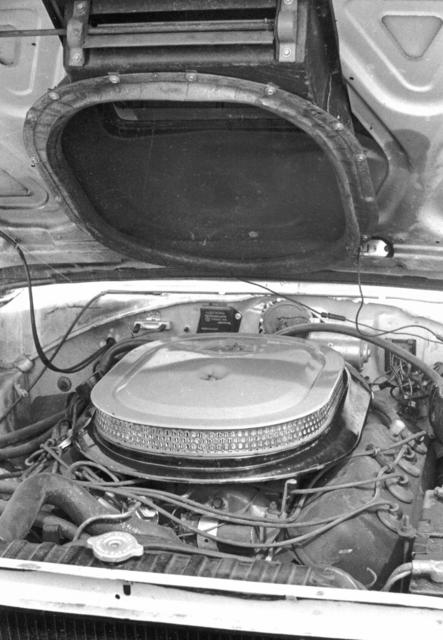
A bit grungy for such low mileage, the potent Hemi was tuned and tweaked at the track by Al Kirschenbaum, high performance guru at Rockville Centre Dodge. The 420-mile fresh air-inducted Hemi was set up to run, not sit on the grass at some car show (oops, you missed a speck of dust.)
All the track running made me anxious to try this car on the street–and all that implied in 1970. Back in the day, box stock Street Hemis weren’t known for great street response thanks to the sewer-size ports and manhole size valves. But this one ran good.
And it looked great. The bright yellow paint, black stripes, and 9-inch wide tires and wheels made this GTX all image, a killer cruiser, tough and brutal. I spent the week cruising all the spots in Brooklyn and Queens–Cross Bay Boulevard, Connecting Highway, Union Turnpike, Mitchell’s, even the Adventurer’s Inn up in Westchester. The GTX definitely made a statement wherever it was seen.
Cross Bay in Queens, NY was an especially fertile playground. You could part in the Pizza City parking lot for a awhile, then burn out of the lot, get rubber in all four gears and pull into the Big Bow Wow lot just down the street. It was quite a show.
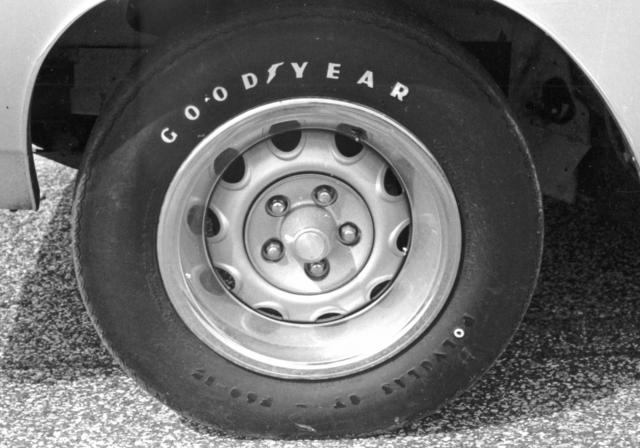
The stock Goodyear Poly F60-15s ran into a traction wall at 13.85 ET, so they had to break out the slicks.
What was even better, though, was meeting up with some asswipe in a jacked up Chevelle SS at a light. What is it about these Chevy guys that make them think they are the kings of the street? OK, I was one of them for years. But this week, I was a Mopar man and no dork in a Chevy was going to take this mighty Mopar. More than a few sucked this GTX’s tailpipes that week.
One memorable run pit the GTX against a clapped out ’55 Chevy running “a V8.” That’s all he would admit to. I recognized the rumble coming from under the car as big block. He was the self-proclaimed King of the Second Bridge on Cross Bay–one of the prime street racing spots in Queens. Soon, it was “Here’s your king, asswipe,” as the yellow Mopar had him sucking its tailpipe gases.
All too soon, it was time for me to return the big, hairy Plymouth GTX. It had made Hemi believers out of a bunch of Ford and GM dorks over the past week and I was sorry to see it go.
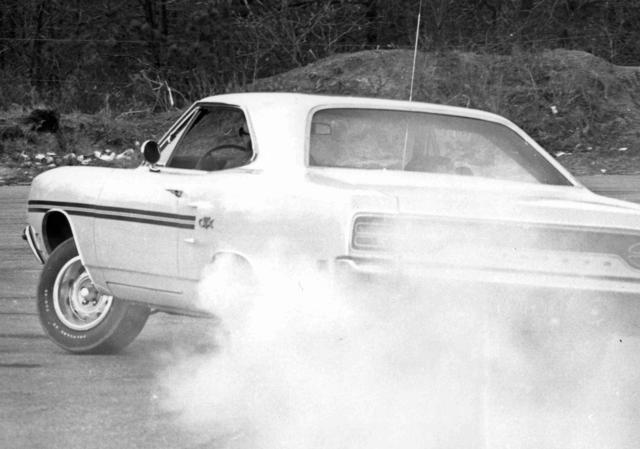
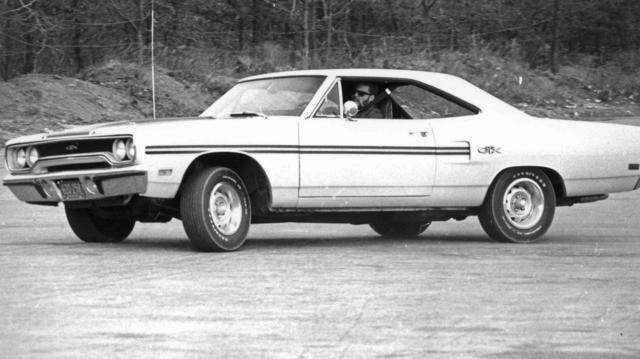
Handling? Not a Hemi’s cup of chowder. But Kirsch gave it his best shot on Suffolk’s oval track handling course. Color film was not in the Cars’ budget, and no one had dreamed of digital, so Kodak Tri-X black and white film was what Oldham loaded into his Brownie. Our first choice for this story’s title was “50 Shades of Gray.” But we were told that had already been taken.
As it turned out, the GTX was the last Hemi-powered car I tested back in the day. As you know, the engine was discontinued by Chrysler after the 1971 model year and I never road tested any ’71 models with a Hemi. In doing some research recently, I was astounded to find out that Mother produced just 76 Hemi-powered GTXs in 1970 (according to Galen Govier); 71 were sold in the US and five for Canada. Of those, only 43 had 4-speeds.
Little did I know back in the day that I was driving one of just 43 Hemi 4-speed GTXs made in 1970. Frankly, though, I wouldn’t have given a ratsass. Back then, no one gave a rap about collectability, how many were made, matching numbers or whether all the screw slots were line up correctly during restoration. All we cared about was elapsed times, getting rubber in second gear, doing burnouts at the Bow-Wow and running the tires off these cars. And after all, that’s what they were made for.

